- Home
- Robert Graysmith
The Laughing Gorilla Page 33
The Laughing Gorilla Read online
Page 33
MONDAY, March 8, 1937, started badly for Dullea because of a “damn freak accident” out on the Bay. Visibility was crystal clear as the President Coolidge, sailing from one of the two Dollar Piers at Hunter’s Point, passed Alcatraz in the hands of the bar pilot. Then a fog descended. Captain Hunter was six hundred feet away from the Frank H. Buck, when he sighted her too late to avoid a collision. The enormous tanker hung up between Sutro Heights and Lands End on needle rocks 150 yards offshore—stern pointed into the air, crude oil gushing from her hold. Gawkers along the crumbling cliffs choked the highway. Dullea dealt with the jam, then went to lunch at the Ferry Building.
A cold wind came up at his back. The Bay was choppy. The Ferry Plaza sat in silence. Papers blowing about the empty concourse headlined: “The Old Ferry Terminal is Deserted: Gone, but not forgotten.” In a few months, the S.P. ferryboat passenger service figures would be “dismal.” In a year and a half Golden Gate Ferries would end auto ferry service, close the Hyde Street-Sausalito crossing, and put twenty-two ferries up for sale. The SP’s New Orleans, El Paso, and the Klamath would go to the Richmond-San Rafael ferry. In two years, the last Piedmont ferry boat would run. Within five years, ferry boats would cease running to Marin altogether. In a decade, the wide iron bridge and the Great Loop would be gone.
Dullea watched commuters arriving on the new red bridge trains, jamming the trolleys and bringing more congestion than ever to Market Street now that there were two bridges in the Bay. For four and a half years, he had watched this second bridge, from the construction of the pier and trestle to the sinking of the twin foundations into bedrock with dynamite. He missed the days when blazing rivets flew like meteors from tongs to buckets high above the Bay. Exactly a year before, every bell and whistle in San Francisco had sounded as the Golden Gate Bridge opened. The wind hummed, a shrill sound, through the two indestructible cables passing over the tops of the stepped-back steel towers. “The workers heard it high up in the wires,” Willis O’Brien reported, “and from the towers came a deep, organlike note . . . changing, deepening, rising.”
They painted the single-span suspension bridge International Orange—the color most visible in fog. Dullea missed that frenzied activity now, but the great span hadn’t come without cost. In January, a toppling derrick killed one man and a wooden platform beneath the deck wrenched loose and carried nine workers 220 feet into the Bay. Miraculously, two souls dangling from the underside escaped. The two bridges were here to stay. Apparently so was Chief Quinn. Dullea still had no idea how to dislodge him. Rumors of new police corruption reached Dullea’s ears daily, but as long as all three police commissioners backed the chief, Dullea was powerless.
On May 26, Quinn dropped by the St. Francis for lunch. It was dark for the first time since the ’06 quake and fire, and the lobby was eerily silent. Exiting the door was comedian Oliver Hardy, out of breath and lugging his own bags. He’d never been this hungry. When the maids, desk clerks, and bellmen put on armbands reading AFL PICKET and walked out, the cooks hung up their aprons, too. The chief hated strikers. Because of them, the hotel would remain shuttered for the following eighty-seven days. By then a great many changes would have taken place in Quinn’s life. Three days later, he got to crack a few heads when there was a riot in the Polk gulch area during the Golden Gate Bridge Fiesta. That lifted his spirits a little.
ON September 8, Captain Dullea spent Sunday morning puttering about his den, listening to the radio. At 9:00 A.M., Bobbie Rockwell read the Chronicle Sunday comics aloud over the air. But Dullea never cracked a smile. Some little fact still troubled him, some clue that was right before his eyes. He worked all day, and as the afternoon waned, the answer to the riddle had not become visible. A radio jingle was playing, “Coffees and coffees have invaded the West, but of all of the brands, you’ll find Caswell’s the best.” Long shadows crept across the rug. He felt the evening coolness. At 5:30 P.M., a mocking laugh filled his comfortable room. For a year, that same laughter had been emanating over the Mutual Radio Network. The Shadow had made the jump from pulps to radio when San Francisco distributors McGregor & Sollie produced twenty-six fifteen-minute, transcribed episodes for the Don Lee Network. Though Orson Welles starred as the invisible sleuth, announcer Frank Readick intoned the Shadow’s chilling laugh. Welles, although a great actor, could not.
Shadows all around Dullea moved, lumbering and hulking. The glow of the radio dial was faint in the dark. And there was that sibilant laugh filling the room that even the brilliant Orson Welles couldn’t duplicate, but which the Gorilla Man apparently could with remarkable ease. Dullea heard that laughter in his dreams directed at himself and at his shamed department. In his mind, he saw Officer Malcolm’s blood staining the dock and the bloody track of an ape’s footprints trailing into the fog. The Gorilla Man turned and in his subconscious, Dullea knew that face. It just wouldn’t come into focus.
FORTY-FIVE
First degree murders are those that are premeditated, committed by lying in wait, or by poison. Second degree murders are all the others.
—DETECTIVE MANUAL OF THE PERIOD
IN Cleveland on August 16, 1938, a straw boss detailed Jimmy Dawson, Ed Smith, and James McShack to clear a dump at Lake Shore Drive and East Ninth Street. When Dawson dislodged a disordered hill buzzing with insects the earth fell away to reveal a dismembered female torso wrapped in butcher’s paper. Five feet away lay the head of the Butcher’s eleventh victim, dead about six months. Three hours later, a passerby ferreted out a can containing a man’s hair-covered skull. This twelfth victim had been killed three months before the woman. Dr. Gerber, in white shoes, tiptoed among the debris and ferreted out forty bones, a frozen fish container, a bloodstained sugar sack, and a colorful, homemade patchwork quilt.
When Nevel got to the dump at 4:40 P.M., he studied the quilt. “This is very unusual knitting,” he said, “so unusual that someone is going to remember it.” Charles Damyn, a barber, remembered giving it to a junkman sometime in February. “Find that junkman,” Nevel ordered. Detectives Hogan, Theodore Carlson, and Herbert Wachsman found him that day. “Yes, I got the quilt from a barber,” said Elmer Cummings, a fifty-six-year-old junkman, “but I sold it to the Scoville Rag and Paper Company.”
Hot on the trail, Hogan rushed to the warehouse at 2276 Scoville Avenue. “But we put it out back to dry,” said William Blusinsky, “and someone made off with it.” The trail went cold.
Officially, Eliot Ness had been in charge of the Butcher investigation since September 12, 1936, his first day in office as Cleveland’s youngest director of public safety. He was a charismatic figure—blue eyed, brown haired, six feet tall, 180 pounds, with a firm, deep voice. A crack shot, Ness should be able to catch the Butcher—he had gotten Capone. With the passage of the Volstead Act, “Scarface” Al Capone had become the iron-handed ruler of a $120 million empire of booze, vice, and gambling. In September 1929, Ness, then a twenty-six-year-old prohibition agent, told U.S. District Attorney George Q. Johnson that only a tightly knit group of incorruptible gangbusters could break Capone’s death grip on Chicago. Ness handpicked nine fearless agents of the DOJ Prohibition Detail, and for the next two years, “The Untouchables” raided Capone’s breweries, confiscated his trucks, and jailed his men. With Capone’s conviction on tax evasion charges, The Untouchables were disbanded, and Ness was assigned to the Northern District of Ohio in charge of the Treasury Department’s Alcoholic Tax Unit, which had offices in Cleveland. “The city of Cleveland was a cesspool of crime,” Oscar Fraley wrote, “the Cleveland police department was riddled by by graft and corruption.”
When that city elected a reform ticket, Ness, appointed to delve into police corruption, forced two hundred resignations and sent twelve officers to prison. Now catching the Butcher was his most important mission.
“We’ve got to find this man,” Ness told Nevel, “but frankly I just don’t know how. He has great cunning and strength, a kind of monster who sets to work by a system of trial and
error to find a suitable victim and once he finds a way that works he never deviates from that pattern.”
He got out maps of the notorious Flats District and the run and laid them out.
“A murder lab, if one exists, is in these woods,” said Nevel. “What if we took aerial photos of the murder sites from a great enough altitude to reveal any well-worn paths to and from the killer’s private lair?” Ness got the Ohio governor to call out the National Guard. Within the week, pilots of the 112 Observation Squadron/37th Division were soaring over the Kingsbury Run on four photo reconnaissance flights. Nevel enlarged their detailed negatives and went over every inch with a magnifying glass. There were no worn paths.
“The stomach contents of some of the victims have been mostly fruit and vegetables,” Ness said. “That is the main diet of the men of the Flats. These unemployed and unemployables live like gypsies in a cluster of shacks and tents near the railway sidings. I suspect the killer is preying on these traveling vagrants. By closing the Flats down we might be able to save some lives. If we can’t catch the killer, then we can at least take away the victims.”
At 1:00 A.M. on August 18, 1938, Ness led eleven police cars and twenty-five detectives over the run across the Thirty-seventh Street Bridge, where the Erie Railroad tracks crossed. Below, the convoy was reflected in a stagnant pool formed by the diverted waters. Farther up the ravine, small fires crackled among tin-roofed buildings—the shanty town. As Ness’s bulldozers idled on the perimeter of the hobo jungle, a fire truck mounted with high-intensity spotlights was moved onto the hillside. His team of ten detectives took up posts at the six approaches to the camp as Sergeant James McDonald’s strike team infiltrated the raiding zone. Ness gave a wide swinging arc of his flashlight (his prearranged signal), grabbed an ax handle, and led his men along the Eagle Street ramp. A battle erupted, illuminated by the powerful fire truck searchlights. Cops loaded the vagrants into Black Marias as Ness searched all thirty huts for the Butcher’s curved knife. When he didn’t find it, bulldozers flattened the shacks and firemen torched them. All the next day, a black cloud that could be seen from downtown, hung over the Flats. “Some of the men we brought in would have most certainly been the next victims of the killer,” Ness said. “Those men are now safe.”
With Ness’s raid the Butcher murders ended. After three years of panic, “one of the most sinister figures in all the annals of crime. . . a genius in his chosen bloodstained field,” had vanished.21
FORTY-SIX
As the ape approached the casement with its mutilated burden, the sailor shrank aghast to the rod, and . . . hurried at once home—dreading the consequences of the butchery.
—E. A. POE, “THE MURDERS IN THE RUE MORGUE”
ON Friday, August 26, 1938, the Cleveland police grilled a suspect—a Great Lake’s sailor named Harry who had dated one of the victims, Flo Polillo. The AP reported:
Police today released a suspect in Cleveland’s torso slayings of the past three years. Three days of questioning had failed, Lt. Michael Blackwell said, to connect him with the crimes. Blackwell had described the man, a former hospital morgue attendant, whose hospital duties included the dissection of bodies for autopsies, as the only person among the hundreds questioned who “amounted to a nickel as a suspect.”
By August 29, the Kingsbury Run Butcher had generated international headlines lurid enough to catch the attention of that world champion of murder, Adolph Hitler. The German press, under the domination of Propaganda Minister Josef Goebbels, the Beobachters and Tageblatts and even Benito Mussolini’s Fascist press editorialized how decadent life must be in a democracy where such a monster could stalk the streets without fear of capture.
The Cleveland murder sites were everywhere—on the East and West Sides, in Kingsbury Run, and on Jackass Hill, in the streets, slums, rivers, woods, sewers, and swamps of the city, seemingly every place an inhuman fiend could eviscerate the populace for no reason at all.
An itinerant Central Avenue fruit vendor tipped Detective Hogan that “Frank Dolezal, a bricklayer, carries knives around.”
Dolezal’s apartment at 1908 Central Avenue SE lay 235 yards from where Flo Polillo’s body was found. He had moved out the day after authorities commenced door-to-door searches along Scoville Avenue; Rose Wallace, the Lorain-Central Bridge victim, had lived a block from him at 2027 Scoville Avenue, and the quilt under the eleventh victim’s torso had come from Scoville Rag and Paper at 2276 Scoville Avenue.
Local PI Lawrence J. “Pat” Lyons informed Cuyahoga County Sheriff Martin L. O’Donnell that Dolezal once lived with Mrs. Polillo, who regularly saw Wallace at her home; furthermore, a heavily tattooed sailor who visited Dolezal was not seen again. “They all knew each other,” Lyons said. “Andrassy, Polillo, Wallace, and Dolezal all frequented a cheap saloon on the corner of East Twentieth Street and Central Avenue. In the guise of friendship, one gained their confidence and killed them one by one.”
Lyons and two deputies gained access to Dolezal’s Central Avenue rooms and took a sample of black stains on the bathroom baseboard. Lyons’s chemist brother, G. V. Lyons, said, “It’s blood, all right.”
On July 5, 1939, Sheriff O’Donnell arrested Dolezal, who once worked at a slaughter house cutting up meat, had known Andrassy and Wallace, and had quarreled with Polillo. “Flo and I were in my room drinking Friday night,” Dolezal explained. “She had two drinks. I had two drinks. She wanted to go out, but had no money. She grabbed $10 I had in my pocket and I argued with her because she had tried to take some money from me before. But I didn’t kill her. You’ve got to believe me!”
“She hit you, didn’t she? Didn’t she?” Detective Harry Brown said.
“All right, yes!” Dolezal said. “She came at me with a butcher knife. And I hit her with my fist. She fell and hit her head against the bathtub. I thought she was dead so I put her in the bathtub around 2:00 A.M. Then I took a knife—the small one there and cut off her head. Then I cut off her legs. Then her arms.”
Dolezal said he stashed her nude torso, coat, and shoes at the rear of Hart Manufacturing along with bloody parcels containing her severed right arm, a right hand, and bisected thighs. In two baskets he carried her head, lower legs, and left arm three miles to Lake Erie. “At 4:00 A.M. I crossed the ice until I reached the breakwater in the lake and threw the contents into the open water beyond.”
On the night of the murder, January 25-26, 1936, ice had formed between the shore and the breakwater, but a strong offshore breeze had scattered spots of open water. But if Dolezal had thrown Polillo’s lower legs and left arm beyond the breakwater, how had they ended up behind a vacant building on Orange Avenue? Then, on July 17, Dr. E. E. Ecker, a pathologist at Cleveland’s Case Western Reserve University, retested the matter from Dolezal’s bathroom.22 The scrapings were not blood at all. The charge against Dolezal was reduced to manslaughter, and at 1:44 P.M. August 22, Dolezal’s watch left him alone in cellblock B-4. Four minutes later, the assistant jailer found him hanging like Ramon Hughes from a noose. A jail nurse attempted to revive him with insulin, but by 1:57 P.M. he was dead.
Ness had a better suspect. Chicago transient Emil Fronek told him he had barely escaped with his life after being “poisoned” by a Kingsbury Run doctor who fed him a home-cooked meal. Another hobo claimed he almost “got cut up in that house too.” But neither could locate it again. Ness interrogated Dr. Francis Edward Sweeney, who had an office on the southwest corner of Broadway and Pershing near Jackass Hill. When Dr. Sweeney failed a lie detector test, Ness ran for mayor on the presumption he had solved the murders. Then, a postal inspector intercepted a letter to Chief Matowitz postmarked December 19, 1938, Los Angeles. “You can rest easy now,” it concluded, “as I have come out to sunny California for the winter.”
FORTY-SEVEN
Silverback gorillas have enlarged canine teeth and broad incisors for biting. A powerful neck gives a conical shape to the head.
—GORILLA
AT the end of 19
38, the Gorilla Man talked his wife, Lydia, into selling her small coffee shop in Brooklyn and moving back out to California. All through 1939, she labored to make a success of her new flower shop at Long Beach, and this left her husband with free time. He shipped out or made trips to San Francisco bankrolled by her profits. Wherever the Gorilla Man was, he continued making a monkey out of his pursuers. His big hands had a mind of their own. With so much time on those hands, there were hours he couldn’t account for.
THROUGHOUT San Francisco, flags hanging at half-staff on city buildings stirred as if by a breath of fresh air. An overnight death at St. Joseph’s Hospital on Tuesday, February 6, 1940, set in motion a series of astonishing events. “Beloved Police Commissioner Charles Traung has passed to his reward,” said Mayor Rossi. “He will be greatly missed, not only by myself, but by the people of this city.”
As Traung’s body lay in state in the City Hall rotunda, Rossi sat alone in his office. He had been in this chair for innumerable years. He had been appointed mayor when Mayor James Rolph resigned to become governor, had been mayor when the Bay and Golden Gate Bridges were built, and had presided over the building of Treasure Island and the International Exposition of 1939. But he now faced one of his biggest decisions—filling Traung’s post on the Police Commission Board.
The man he appointed would break the bitter deadlock between Commissioners Ward Mailliard and Walter McGovern that had endured for years over the chief’s post. Mailliard was Chief Quinn’s man; McGovern wasn’t.

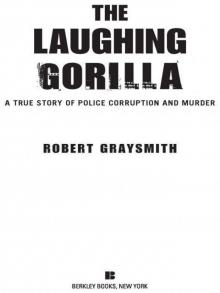 The Laughing Gorilla: A True Story of Police Corruption and Murder
The Laughing Gorilla: A True Story of Police Corruption and Murder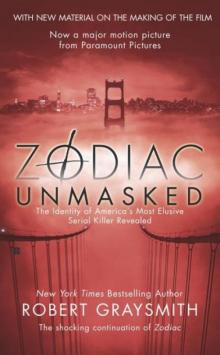 Zodiac Unmasked: The Identity of America's Most Elusive Serial Killer Revealed
Zodiac Unmasked: The Identity of America's Most Elusive Serial Killer Revealed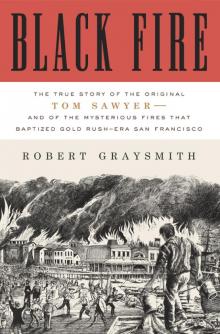 Black Fire: The True Story of the Original Tom Sawyer
Black Fire: The True Story of the Original Tom Sawyer Zodiac Unmasked: The Identity of America's Most Elusive Serial Killers Revealed
Zodiac Unmasked: The Identity of America's Most Elusive Serial Killers Revealed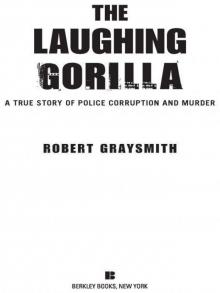 The Laughing Gorilla
The Laughing Gorilla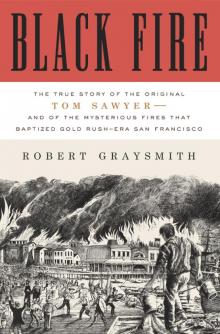 Black Fire
Black Fire